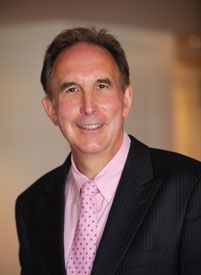Patients, Surgeons Face Hurdles in Making Breast Cancer Decisions
The choice of breast-conserving surgery over mastectomy is often based on fear of recurrence and death rather than clinical evidence.

J. Michael Dixon, MBChB, MD
Professor of Surgery, Consultant Surgeon, University of Edinburgh Clinical Director of the Edinburgh Breast Unit, Western General Hospital, Edinburgh, Scotland.
Women who face the choice of breast-conserving surgery over mastectomy are making the decision based on fear of cancer recurrence and death rather than clinical evidence, according to J. Michael Dixon, MBChB, MD.
Dixon cited several studies challenging the notion that patients are empowered to make better choices during a presentation at the 29th Annual Miami Breast Cancer Conference. He is clinical director of the Edinburgh Breast Unit, Western General Hospital,
 Edinburgh, Scotland.
“Patients believe they are informed about treatment choices, but their understanding of the evidence is poor,” he said.
He said nearly 60% of women in one study did not know that the 5-year survival rate after surgery was equal for mastectomy and lumpectomy with radiotherapy, while another study showed that women evaluating different types of reconstruction surgery answered more than 60% of questions about the procedures incorrectly.
Moreover, Dixon said the surgeon plays an important role in patients’ treatment choices. “How important is the surgeon in what the patient gets?” he said.
In one study, three breast surgeons at a single center discussed 663 patients with T1 and T2 tumors and ended up with a significant difference in mastectomy rates: 30.5% for surgeon A, 26.9% for surgeon B, and 15.8% for surgeon C (Breast J. 2008;4:324-329).
In another study of 180 patients, the surgeon’s preference emerged as the largest factor predicting whether patients underwent mastectomy or breast conserving-surgery (Br J Cancer. 2004;90[11]:2123-2130).
“Is this really informed choice?” Dixon asked. “Informed choice is an illusion at this point.”
Dixon noted that rates of mastectomy in the United States show that patients are not informed well enough. More than 25% of US women with stage 0-II breast cancer undergo mastectomy, while rates of contralateral prophylactic mastectomy are rising.
He said clinicians must give patients current information about clinical study data so they can be better informed about their choices. “Do we inform patients fully of the pros and cons of breast-conserving surgery and the pros and cons of mastectomy?” he said.
At the same time, he said, communicating risk is a major problem for clinicians, given the differing personalities of patients and the time available to make and discuss options.
“For patients to be involved in decision making, they have to have ready access to current evidence-based information, guidance on how to weigh up the pros and cons, and a supportive environment which facilitates patient engagement,” Dixon maintained.
<<< View the On-site Coverage From the 29th Annual Miami Breast Cancer Conference.



